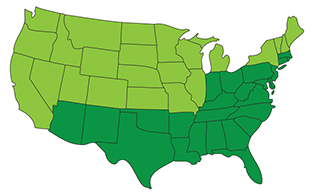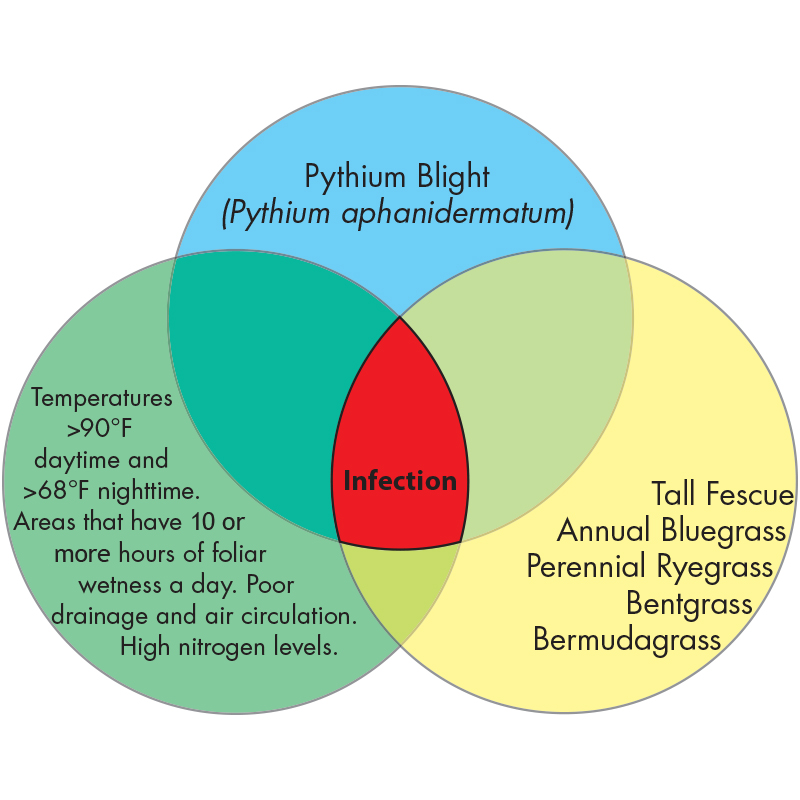
Pythium Blight
Pythium aphanidermatum
Pythium Blight is a common lawn disease that attacks highly maintained turf grass. Also called Pythium Root Rot, the lawn fungus responsible for this infection can affect a variety of types of grass throughout the United States, but it is much more common in the South. Pythium Blight damage occurs during summer months in the northern states and from early fall through late spring in the southern states.
Identify

Foliar & Root
Pythium Blight appears suddenly during hot, humid weather and is common in the wettest areas and in the surface drainage pattern. This lawn disease is harshest on immature grasss and seedlings and is not commonly found in home lawns. Signs of Pythium Blight include rapidly growing, brown, greasy circular spots measuring 3/4 of an inch to 2 inches. Early in the morning, these spots are dark and saturated with water. The cotton-like masses of mycelium (lawn fungus) Pythium Blight produces can combine to form larger patches whereas infected areas of your lawn may appear bronze to orange in color, collapse and die.
Life Cycle
A Pythium Blight infection can occur only if all of the following conditions are present: 1. Pathogen: Pythium aphanidermatum lawn fungus 2. Host: Annual Bluegrass, Bentgrass, Bermudagrass, Perennial Ryegrass or Tall Fescue 3. Environment: Hot, humid climates with temperatures in excess of 90°F in the daytime and 68° at nighttime; high-nitrogen soils

Control
Because you can't change your environment, the best way to control Pythium Blight is to create conditions that will foster a healthy lawn. Not only will this make your yard unfavorable for Pythium Blight growth, but it will also lower your risk of extensive damage should the lawn disease develop—plus you'll have the type of lawn you'll want to live on. For Pythium Blight control and lawn fungus treatment, TruGreen® recommends the following cultural control tips: • Avoid mowing wet, infected grass where mycelium is present to avoid spreading spores with the mower blades • Reduce thatch and improve drainage with core aeration • Increase air circulation and reduce the amount of shade, which will limit the amount of time of foliar wetness • Water deeply one to three times a week rather than lightly every day • Avoid watering at night
Diagram








